
Most tourist visitors to Malaysia, especially from Europe, complain about the ubiquitous oil palms. The monoculture is obvious, but why don’t those same tourists complain about the endless maize and ryegrass in Europe? I think it’s because – unlike in Europe – the original sliver of paradise can still be seen in Malaysia. Quite paradoxically, people seem to complain because the Malaysians haven’t destroyed everything. The Europeans have, but they are now ignorant because of the shifting baseline effect. The answer for non-governmental conservation organisations seems clear: show people what has been lost. Alright, after this soapbox performance you deserve one of Jeff’s great pictures – bring in the Chestnut-capped Laughingthrushes!

Who’s Jeff? I hear you ask. Well, I had just arrived in (on?) Bukit Fraser and decided to go for a wee walk to see what was around. I bumped into Jeff, the principal of a private school in the Middle East. We struck up a conversation, decided that four eyes are better than two and together we birded this particular sliver of paradise for the next couple of days. Being the principal’s pet was a fantastic deal for me. Not only did Jeff have great birding skills, but he also provided all the photographs for this article. In return, I drove to some of the hotspots and made feeble jokes. The incongruity of the deal is apparent to me.

OK, I also knew where the hotspots were and what to expect, for I had prepared really well for this part of my trip. The information about the hotspots I gleaned from a local website. Of course, 10000birds should always be on the reading list. I stayed at the same hotel Kai Pflug had mentioned, which I can recommend too. The cat he mentions is no more, but the satay was delicious. Unfortunately, the correct guidebook is still out of print so instead I used the book for the Greater Sunda Islands and Wallacea mentioned in a post with the closest thing to a seventeenth century book title we have had in years. With the help of Merlin and eBird we got most if not all identification challenges resolved. Four eyes…

We birded several hotspots. Jalan Mager, Jalan Lady Maxwell, the Telecom Loop and The Gap. My absolute favourite is the Telecom Loop. Jeff and I walked the loop on my penultimate morning and Jeff went back on his own in the afternoon after we visited The Gap. I would not be exaggerating if I said that if you walk this loop for three days in a row, morning and afternoon, you will see pretty much all there is to see on Bukit Fraser and every walk will be different.

While not as physically challenging as birding in Taman Negara it isn’t easy to find birds in the dense foliage. Staying on the roads is a good strategy, not only to avoid the leeches, but also to have at least some clear space to scan. Birds come in waves at Bukit Fraser and overall numbers are not high. Species count is off the scale, which is to be expected in the tropics and most birds are extremely colourful. Just look at this Scarlet Minivet. Could also be a Fiery Minivet, because with Minivets you need to see the females to determine the species. A very woke family, indeed.

You don’t read this much in my posts, but thanks to Jeff I have so many good pictures that I will do another post on Bukit Fraser tomorrow.


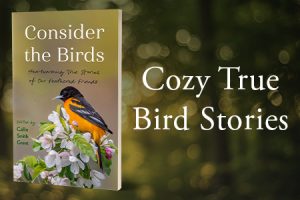

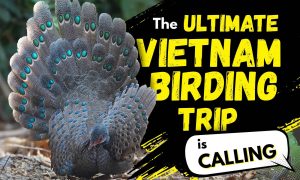
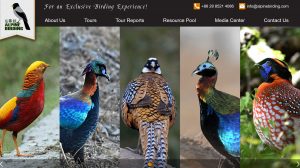

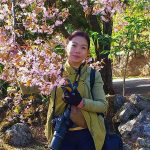
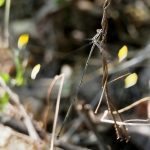
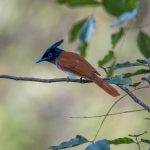
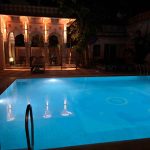
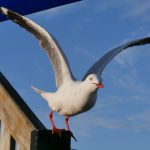
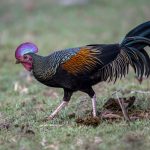
Peter, love your photos, all, especially the “monkey” (not sure?) peeking in the window, but I really love your opening paragraph. I think this may not be a way most 10,000 Birds readers will have thought of habitat destruction. I know it will stick in my memory when I am driving by gigantic fields of corn and soy beans, amongst other things.
Thanks Cathy! The peeking monkey is a Pig-tailed Macaque. The only picture I took. All others are by Jeff Kingma.